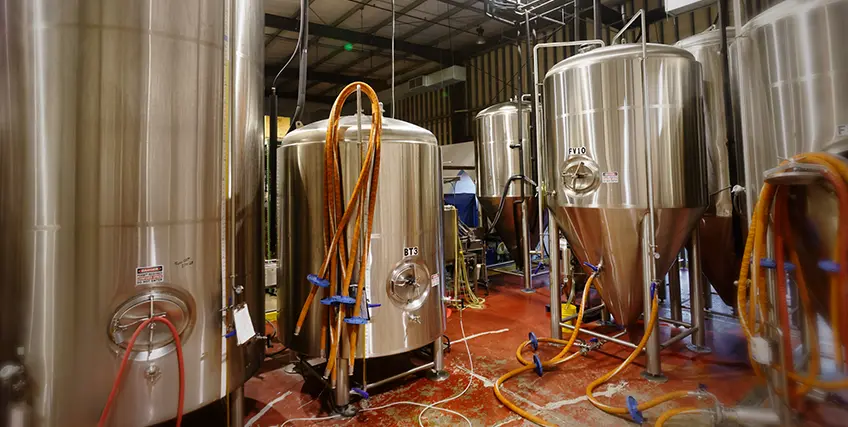Begin by considering your real estate needs, operating costs, expansions, repairs and maintenance. Create a realistic projection of revenues by using past sales history or real financial data from established restaurants that are like yours in size, maturity, target customer, location, and product offerings.
Traditional Restaurant Financing Options
Traditional restaurant business loans are secured by working with a traditional lender, like a bank or credit union. Alternative lenders, or online lending solutions, also offer most types of traditional loans. While the interest rates at alternative lenders may be slightly higher than bank financing, alternative lenders can often offer more flexible eligibility requirements for borrowers. Some types of traditional restaurant funding include:
Term loans
Term loans are a traditional type of financing where approved borrowers receive a sum of money upfront and repay the restaurant business loan over time according to a predetermined payment plan. Interest rates on term loans may be fixed, where they remain constant through the life of the loan, or variable, where the rates fluctuate with the market conditions. For borrowers with less than perfect credit, most lenders also offer secured loans that require collateral.
Restaurant Equipment Financing
Restaurant equipment can be expensive. Consider applying for equipment loans to cover large purchases like walk-in coolers and commercial ovens. Equipment loans are secured by the new equipment, so they offer longer repayment terms and reasonable financing costs.
Business lines of credit for restaurant owners
A business line of credit is a type of financing where the borrower is approved for a maximum credit line and can withdraw funds anytime cash flow is low or restaurant repairs are needed. The financing costs for lines of credit are higher than term loans or other types of small business loans for restaurants, but they are a great option for business owners that need emergency funding for restaurants.
SBA Loans
SBA loans for restaurants are a type of business financing where a portion of the borrowed funds are guaranteed by the U.S. Small Business Administration. Since they are lower risk for the lender, SBA loans offer loan programs with low interest rates and minimum down payments. To get approved for a loan through the SBA, you’ll need to show that you’ve already invested significant capital into the restaurant.
Alternative Restaurant Financing Sources
Traditional loans are not the only way to finance your business goals. Some entrepreneurs prefer to explore alternative restaurant funding sources, so that they can find flexible terms that work with their budget. Many of these options emphasize community support or personal relationships, enabling entrepreneurs to meet their financial need while strengthening their network. Here are some of the most common ways to alternatively finance a restaurant:
Crowdfunding for Restaurants
Crowdfunding works when an individual, or business owner, collects many small contributions from different investors or donors. Most crowdfunding is done using platforms like GoFundMe or Kickstarter. Contributors may expect nothing in return or invest funds with the understanding they’ll receive a reward. Unfortunately, most crowdfunding campaigns are never funded.
Angel Investors and Restaurant Venture Capital
Private investors provide restaurant startup capital in exchange for equity or convertible debt. They can also offer valuable business advice and connections. The disadvantage to working with angel investors or venture capitalists is that they often expect to buy into the business, through an ownership percentage.
Revenue-based financing
Revenue-based financing allows borrowers to make payments that are calculated as a percentage of your monthly revenue. This option works well for startup entrepreneurs or those running growing restaurants. Revenue-based financing can ease cash flow pressures when business is slow, but the total repayment amount and financing costs may be higher than with traditional loans. For example, a merchant cash advance (MCA), offers borrowers fast funding on a short-term basis. MCAs work when the restaurant owner receives a lump sum of cash upfront and weekly or monthly payments are taken from the business’s credit card revenues.
Government Grants for Restaurants
Small business owners may also want to consider government grants and support programs. There are even government-backed loans designed especially for entrepreneurs trying to navigate tough economic times in the service industries.
The U.S. Chamber of Commerce can be a great resource for restaurant owners. They provide detailed information about all types of grants and other assistance programs that are available in your area. Grants are always worth exploring because unlike loans, grants do not need to be paid back. There are also federal grants available to new and seasoned business owners which can be found using sites like Grants.gov.
Building a Strong Business Case
Lenders, investors, and even government programs will likely ask for a business plan during the review process for any business financing options. A compelling business plan should show the restaurant’s market potential, competitive edge, and projected revenues, as well as expenses. Lenders appreciate a well-written business plan that outlines a strategy for overcoming potential challenges, like poor market conditions or supply chain disruptions. However, even with a great business plan it can still be tough to get approved for a loan during economic downturns. In addition to a thorough presentation, some other factors that may impact your approval odds include:
- Type of lender – Small business owners can get a traditional bank loan through local financial institutions or credit unions. Another option is to work with alternative lenders, like Biz2Credit, where you can review several types of loans in one stop.
- Creditworthiness – It’s important to know your borrowing power before working with a lender. Check your credit score and review your credit report for accuracy. If you have bad credit, consider compiling a list of personal assets you can use as collateral to increase your approval odds for a restaurant business loan.
- Loan amount – Along with your creditworthiness, you’ll want to know how much money you need to borrow. Understanding the total amount of funds you’re seeking will help the lender match you to the right type of loan.
Leveraging Assets and Collateral
If you don’t have the creditworthiness to get a traditional loan, or if the terms are unfavorable, asset-based lending for restaurants (offering collateral) may help you get what you need. Collateral minimizes the risks of default for the lender and increases the approval odds for the borrower. Collateralizing your financing can also help borrowers secure lower interest rates. The collateral requirements and different types of collateral accepted depend on the lender’s eligibility requirements, the total loan amount, the borrower’s credit history, and the purpose of the funds.
Networking and Industry Support
Many entrepreneurs find networking to be beneficial in the early stages of restaurant business planning. Networking can help with potential restaurant investor relations and funding opportunities. Engaging with other restaurant owners in your community can help build connections and provide valuable insight to savings potential, sales expectations, and marketing tactics. These professional connections can lead to resources and programs designed to support restaurant owners, especially during tough economic times. To build a network, consider attending industry events, joining relevant forums, or participating in trade shows.
Managing Credit and Financial Health
No matter what credit bracket you’re currently in, it’s never permanent. Even if your credit score is low, you can always build and maintain better financial health. Some ways to improve credit include:
- Regularly review your credit report and dispute any incorrect data
- Make monthly payments on time and ensure that your income, or assets, are strong enough to support your debt schedule.
- To improve credit, consider taking out a secured business loan or business credit card to build better credit.
Negotiating Terms and Managing Debt
It’s crucial to take on debt only when the monthly payment won’t create hardship. One way to keep your monthly payments low while securing the funds you need is to carefully review the terms that accompany every loan offer. You can also negotiate terms before finalizing your financing agreement, for example, you can negotiate shorter or longer repayment plans, different interest rates, flexible origination costs, and other options to secure better terms.
Conclusion
Securing financing for your restaurant during tough economic times requires a strategic approach. By exploring different types of restaurant financing options, presenting a compelling business case, and maintaining strong financial health, you can navigate these challenges and secure the right financing to set your restaurant up for long-term success. Stay resilient, stay informed, and leverage every opportunity to secure the funding you need.
FAQs
-
What are the best financing options for restaurants during tough economic times?
The best restaurant debt financing options for eateries include traditional options like bank loans, business lines of credit, and SBA restaurant loans, but alternative financing options for eateries may also meet your needs.
-
How can I make my restaurant more appealing to lenders and investors?
To make your restaurant more appealing, prepare a detailed budget and realistic cash flow projection. Work on your restaurant credit management, and demonstrate your industry experience and business resilience through a formal business plan.
-
Are there specific government programs that assist restaurants during economic downturns?
Yes, programs like SBA loans and federal and local economic development grants are designed to provide economic downturn restaurant support. Regularly check online resources for new or updated programs.
-
What should I include in my business plan to secure restaurant financing?
Your business plan should include financial projections, market analysis, competitor data, a clear repayment strategy, and demonstrate your restaurant’s mission as well as unique value.
-
How can I manage my restaurant’s finances more effectively to ensure stability?
Manage your finances by maintaining a strong credit score, regularly reviewing financial statements, paying bills on time, and prioritizing debt repayments.
Frequent searches leading to this page
restaurant financing, financing a restaurant, restaurant funding options
Related Articles

Financing by Industry
Strategies for Using Loans to Scale Your Digital Marketing Agency
August 1, 2024
Read More

Financing by Industry
Essential Tips for Financing Your Brewery or Distillery
July 30, 2024
Read More

Financing by Industry
Effective Strategies for Financing Your Beauty Salon and Spa Business
July 2, 2024
Read More
